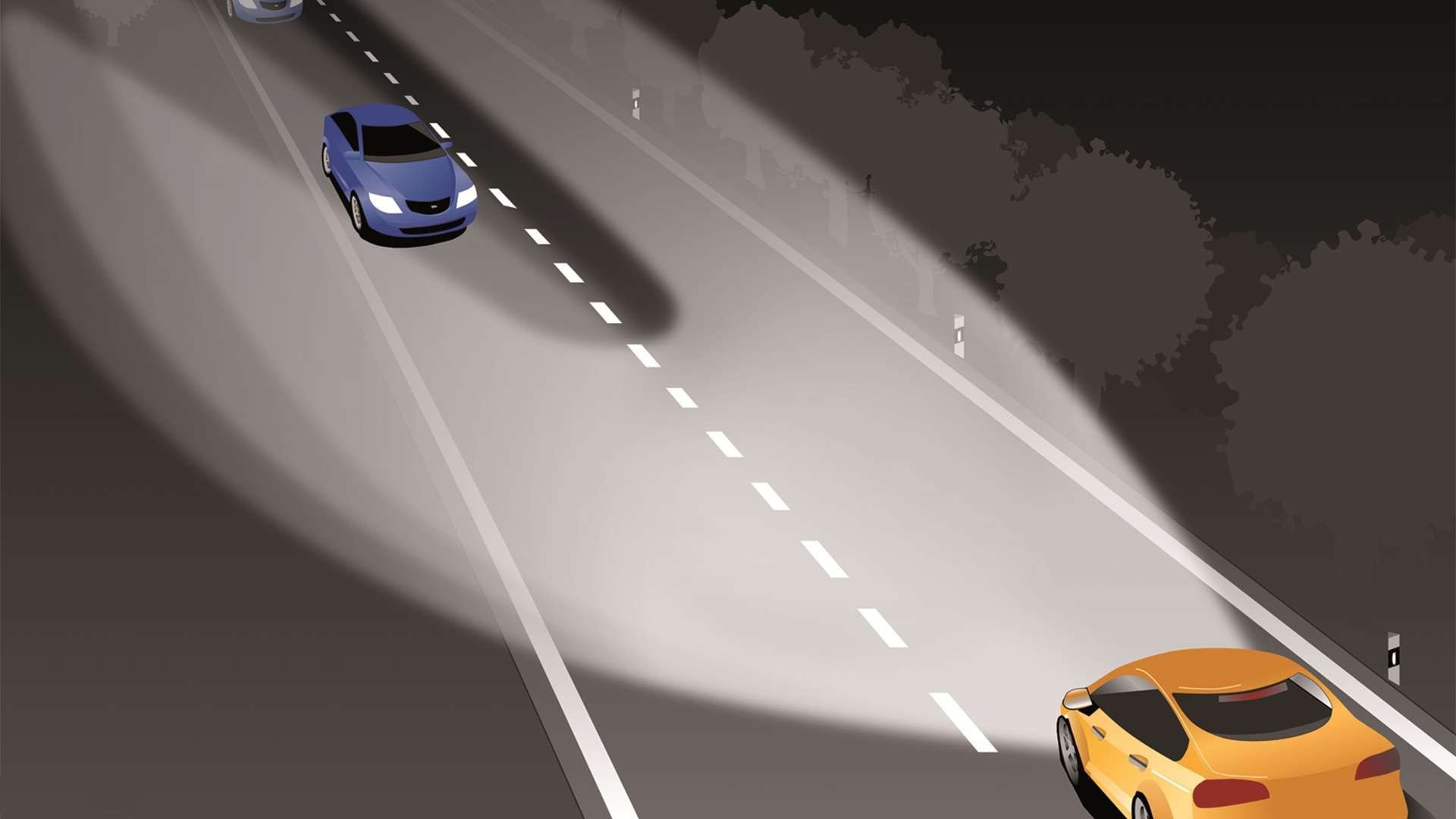5 Easy Facts About Hikari Led Headlight Explained
Table of ContentsThe smart Trick of Hikari Led Headlight That Nobody is Talking AboutThe Best Guide To Hikari Led HeadlightEverything about Hikari Led Headlight


These are physically and electrically interchangeable with H4 bulbs - hikari led headlight. Similar optical techniques are utilized, but with different reflector or lens optics to develop a United States beam pattern instead of a European one. Each system has its advantages and drawbacks. The American system historically permitted a greater overall amount of light within the low beam, given that the entire reflector and lens location is utilized, but at the exact same time, the American system has actually typically offered much less control over upward light that triggers glare, and because of that has been mostly turned down outside the United States.
The high beam is generally a rough copy of the low beam, moved slightly upward and leftward. The European system traditionally produced low beams consisting of less overall light, since just 60% of the reflector's area is used to develop the low beam. However, low beam focus and glare control are easier to accomplish.
Complex-reflector innovation in mix with new bulb styles such as H13 is making it possible for the development of European-type low and high beam patterns without making use of a Graves Guard, while the 1992 United States approval of the H4 bulb has made traditionally European 60%/ 40% optical location departments for low and high beam common in the United States - hikari led headlight.
Dual-beam HID headlamps using reflector innovation have actually been made utilizing adaptations of both strategies. In this system a filament is situated at one focus of an ellipsoidal reflector and has a condenser lens at the front of the lamp. A shade is situated at the image plane, between the reflector and lens, and the projection of the top edge of this shade provides the low-beam cutoff.
The shade might be reduced by a solenoid activated pivot to offer low beam, and gotten rid of from the light path for high beam. Such optics are referred to as BiXenon or BiHalogen projectors. If the cutoff shade is fixed in the light path, separate high-beam lights are required. The condenser lens may have small fresnel rings or other surface treatments to minimize cutoff sharpness.
Hikari Led Headlight Can Be Fun For Everyone
Hella introduced ellipsoidal optics for acetylene headlamps in 1911, however following the electrification of automobile lighting, this optical technique wasn't utilized for lots of years. The very first modern polyellipsoidal (projector) automobile lamp was the Super-Lite, an auxiliary headlamp produced in a joint venture between Chrysler Corporation and Sylvania and optionally set up in 1969 and 1970 full-size Dodge automobiles.
Projector main headlamps first appeared in 1981 on the Audi Quartz, the Quattro-based principle vehicle created by Pininfarina for Geneva Vehicle Salon. [] Established more or less all at once in Germany by Hella and Bosch and in France by Cibi, the projector low beam permitted precise beam focus and a much smaller-diameter optical bundle, though a much deeper one, for any given beam output (hikari led headlight).
The main downside of this kind of headlamp is the requirement to accommodate the physical depth of the assembly, which may extend far back into the engine compartment. The first electric headlamp source of light was the tungsten filament, operating in a vacuum or inert-gas environment inside the headlamp bulb or sealed beam.

Tungsten-halogen technology (also called "quartz-halogen", "quartz-iodine", "iodine cycle", etc.) increases the effective luminescent effectiveness of a tungsten filament: when operating at a higher filament temperature level which results in more lumens output per watt input, a tungsten-halogen lamp has Discover More a much longer brightness life time than similar filaments operating without the halogen regeneration cycle.
European-designed halogen headlamp light sources are typically set up to supply more light at the very same power usage as their lower-output plain tungsten counterparts. By contrast, numerous US-based designs are set up to decrease or decrease the power usage while keeping light output above the legal minimum requirements; some United States tungsten-halogen headlamp lights produce less initial light than their non-halogen counterparts.
There was an enhancement in seeing range with United States halogen high beams, which were permitted for the very first time to produce 150,000 candela (cd) per vehicle, double the non-halogen limit of 75,000 cd but still well shy of the international European limit of 225,000 cd. After exchangeable halogen bulbs were allowed in US headlamps in 1983, development of US bulbs continued to favor long bulb life and low power consumption, while European styles continued to prioritise optical precision and maximum output.
Some Known Factual Statements About Hikari Led Headlight
It was introduced in 1962 by a read here consortium of European bulb and headlamp makers. This bulb has a single axial filament that consumes 55 watts at 12. 0 volts, and produces 1550 lumens 15% when operated at 13. 2 V. H2 (55 W @ 12. 0 V, 1820 lm @ 13.